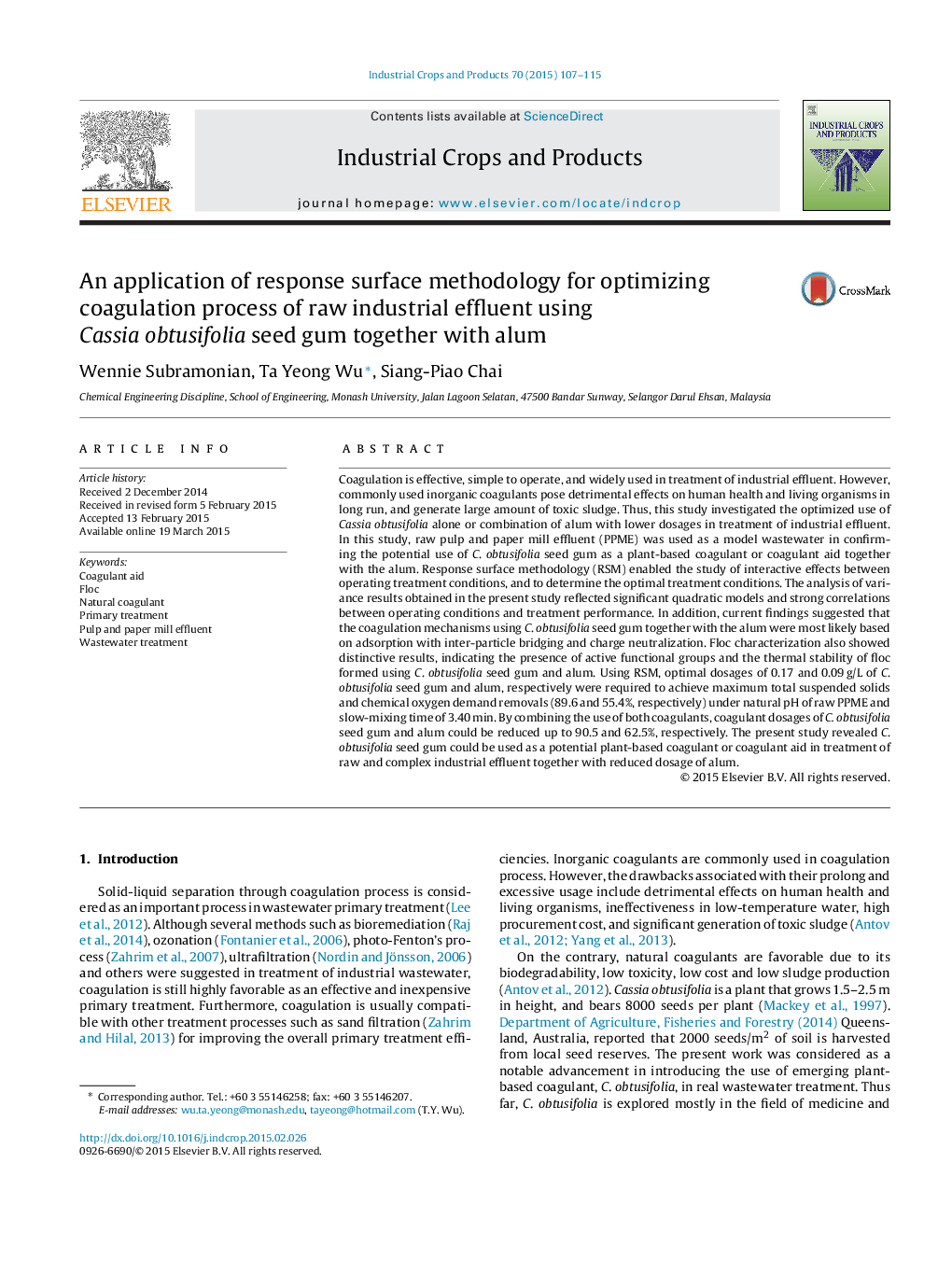| کد مقاله | کد نشریه | سال انتشار | مقاله انگلیسی | نسخه تمام متن |
|---|---|---|---|---|
| 4512886 | 1624839 | 2015 | 9 صفحه PDF | دانلود رایگان |

• Cassia obtusifolia seed gum was a potential plant-based coagulant and coagulant aid.
• Floc formed via coagulation was characterized by SEM, FTIR and SEM.
• Using RSM, C. obtusifolia and alum were reduced up to 90.5 and 62.5%, respectively.
• Using RSM, C. obtusifolia and alum enabled TSS removal from PPME up to 89.6%.
• Using RSM, C. obtusifolia and alum enabled COD removal from PPME up to 55.4%.
Coagulation is effective, simple to operate, and widely used in treatment of industrial effluent. However, commonly used inorganic coagulants pose detrimental effects on human health and living organisms in long run, and generate large amount of toxic sludge. Thus, this study investigated the optimized use of Cassia obtusifolia alone or combination of alum with lower dosages in treatment of industrial effluent. In this study, raw pulp and paper mill effluent (PPME) was used as a model wastewater in confirming the potential use of C. obtusifolia seed gum as a plant-based coagulant or coagulant aid together with the alum. Response surface methodology (RSM) enabled the study of interactive effects between operating treatment conditions, and to determine the optimal treatment conditions. The analysis of variance results obtained in the present study reflected significant quadratic models and strong correlations between operating conditions and treatment performance. In addition, current findings suggested that the coagulation mechanisms using C. obtusifolia seed gum together with the alum were most likely based on adsorption with inter-particle bridging and charge neutralization. Floc characterization also showed distinctive results, indicating the presence of active functional groups and the thermal stability of floc formed using C. obtusifolia seed gum and alum. Using RSM, optimal dosages of 0.17 and 0.09 g/L of C. obtusifolia seed gum and alum, respectively were required to achieve maximum total suspended solids and chemical oxygen demand removals (89.6 and 55.4%, respectively) under natural pH of raw PPME and slow-mixing time of 3.40 min. By combining the use of both coagulants, coagulant dosages of C. obtusifolia seed gum and alum could be reduced up to 90.5 and 62.5%, respectively. The present study revealed C. obtusifolia seed gum could be used as a potential plant-based coagulant or coagulant aid in treatment of raw and complex industrial effluent together with reduced dosage of alum.
Journal: Industrial Crops and Products - Volume 70, August 2015, Pages 107–115